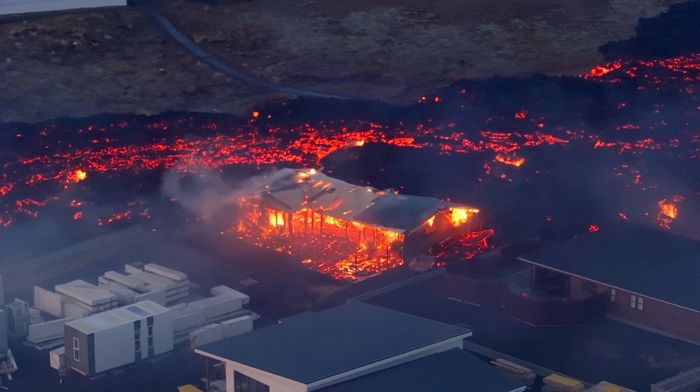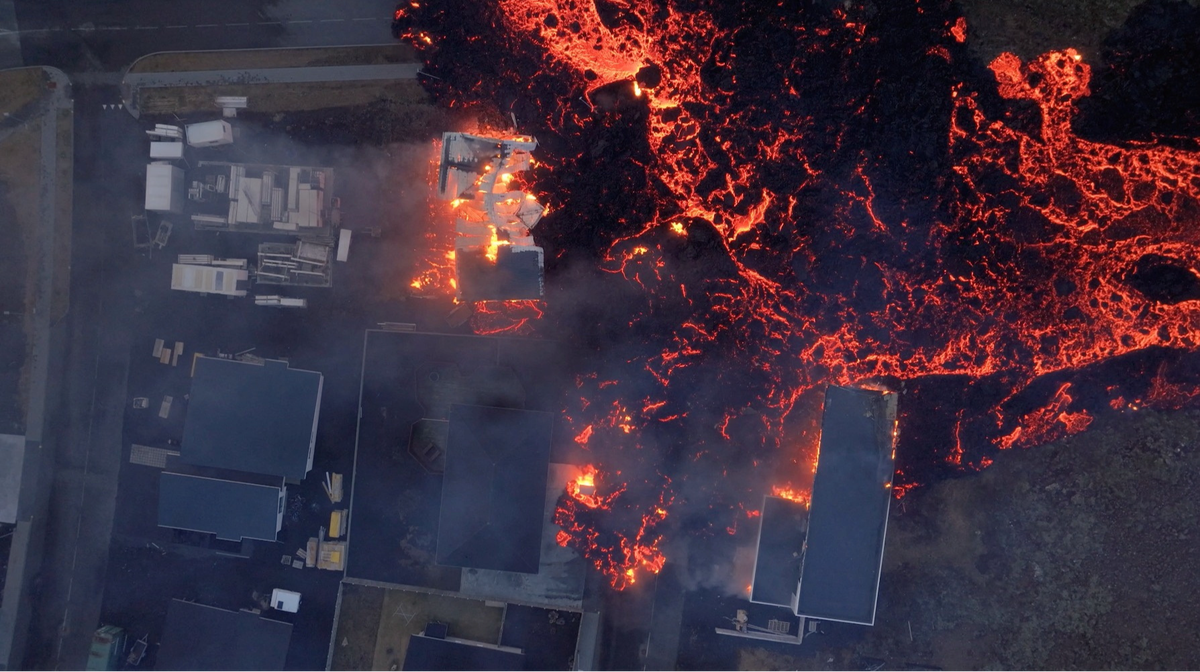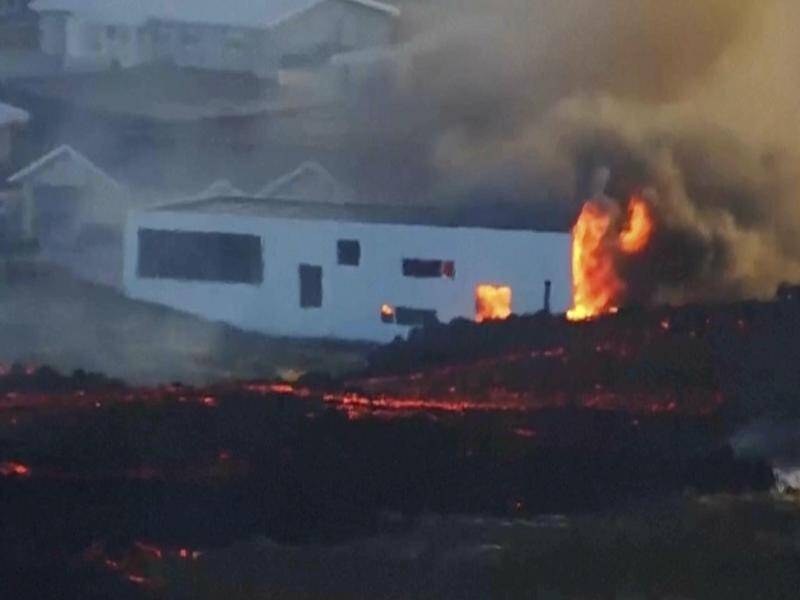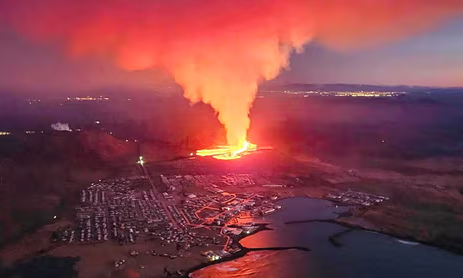A volcano erupted for the second time in less than a month, causing houses to catch fire in the fishing town of Grindavík in southwest Iceland. The eruption, triggered by increased seismic activity, led to the evacuation of the community the day before.
Two fissures formed near the town, with the first eruption beginning at 8 am, approximately 450 meters from the town. Protective barriers diverted lava from the initial fissure away from the town. However, a second crack emerged around midday on the town’s edge, expanding to about 100 meters by evening and engulfing homes in flames. Live images from TV broadcaster RUV revealed that at least three houses were on fire. Glowing orange lava jets flowed, creating a massive smoke cloud against the dark sky. A resident, Sveinn Ari Gudjonsson, expressed the tragedy, stating, “In a little village like this one, we’re like a family, we all know each other as family – it’s tragic seeing this.”

Another resident, a 55-year-old fisherman, described the surreal experience, comparing it to watching a film. The Blue Lagoon, a geothermal spa close by, announced its closure on Sunday, as stated on its website. Iceland’s president, Guðni Jóhannesson, reassured the nation in a televised address on Sunday night, emphasizing unity in challenging times. Jóhannesson expressed disappointment over the unfortunate occurrence that many had hoped to avoid and conveyed optimism for a favorable outcome. In a previous X post, he clarified that there was no immediate danger to lives, but cautioned about potential threats to infrastructure. Benedikt Ófeigsson from the Icelandic Meteorological Office stated to RUV that the volcano’s behavior continues to be unpredictable. Initially, activity had been slowing down since the eruption began, but in the past half-hour to hour, there has been a resurgence in intensity.

This renewed activity is no longer showing signs of subsiding in the town. The Icelandic Civil Protection Agency has elevated its alert status to “emergency,” the highest level on its three-point scale, signaling a potential threat to people, property, communities, or the environment. This eruption marks the fifth on the Reykjanes peninsula since 2021, with the latest occurring near Grindavík on December 18 following a series of earthquakes. Although the town’s 3,800 residents had been evacuated as a precaution weeks prior, more than 100 people had returned recently, only to be evacuated again on Saturday. Linda Karen Gunnarsdóttir from the Animal Protection Association of Iceland emphasized the urgency of rescuing a group of sheep still confined within pens in the town.

Authorities are closely monitoring the nearby Svartsengi geothermal plant, which supplies electricity and water to the 30,000 inhabitants of the Reykjanes peninsula. In a different occurrence, the search was terminated on Saturday for an individual presumed to have fallen into a crevice in the town. Emergency services stated that they had taken every possible measure to minimize the risk to rescuers, but it was deemed unjustifiable to jeopardize their lives.
Iceland’s location between the Eurasian and North American tectonic plates, moving in opposing directions, designates it as a region prone to seismic and volcanic activity. In 2010, ash clouds resulting from eruptions at the Eyjafjallajökull volcano in southern Iceland affected large portions of Europe, leading to the grounding of 100,000 flights and the evacuation of hundreds of Icelanders. In contrast to Eyjafjallajökull, the Reykjanes volcano systems are not confined beneath glaciers, and therefore, they are not anticipated to generate comparable ash clouds.
- Misleading Video Alters Prime Minister Shehbaz’s Speech Targeting Political Rival, Not His Party - 21/04/2024
- ATC Grants Three-Day Remand for Suspects in Ichhra Bazaar Harassment Case - 19/03/2024
- Pakistan, India, and Bangladesh Lead World in Severe Smog Crisis, Exceeding WHO Guidelines - 19/03/2024


